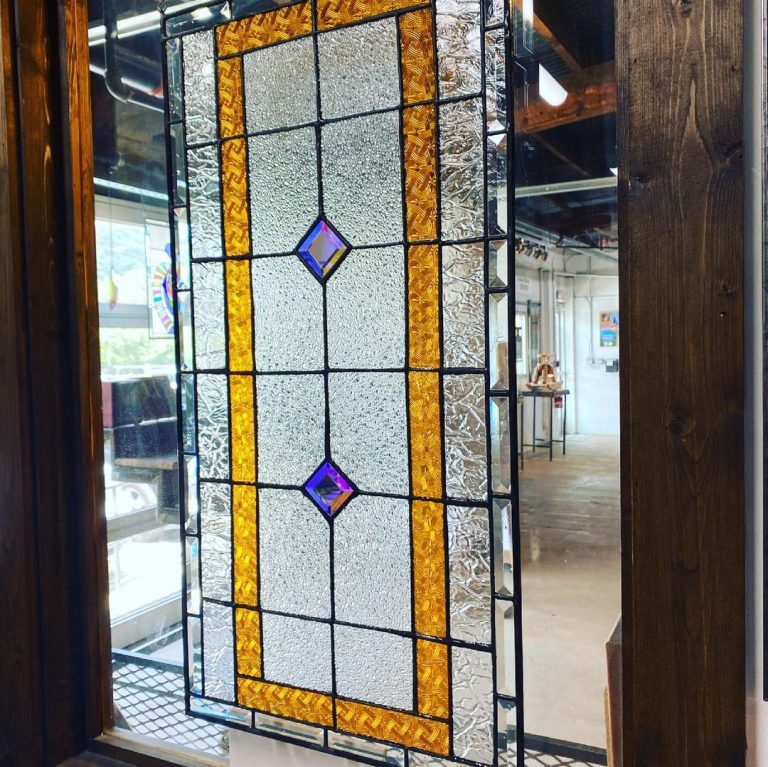Menu


The word stained glass refers to both the substance of coloured glass and the artwork made from it.
Throughout its thousand-year existence, the phrase has almost exclusively been given to the windows of churches and other notable religious buildings.
Stained glass is formed by fusing silica, such as sand, with an alkali, such as potash or soda, as well as lime or lead oxide.
A metallic oxide is added to the primary elements to produce the hue.
Copper oxide generates ruby, blue, or green colours in glass depending on the conditions.
Most colours of blue are frequently made with cobalt.
The addition of chromium and iron oxide can also produce green colours.
There are beautiful selenium yellows as well as vermilions in golden glass, which is sometimes coloured with uranium, cadmium sulphide, or titanium.
Gold is used to make ruby coloured glass.
The process for making stained glass has not changed since the Middle Ages, and it comes in a variety of shapes and sizes.
Stained glass windows have been documented in British monasteries since the 7th century, with the first known mention dating back to 675 AD, when Benedict Biscop commissioned French workers to produce stained glass for the monastery of St Peter’s windows.
Stained glass requires the patience of a skilled craftsman to become comfortable with the medium of glass. The cost of the glass varies greatly from manufacturer to manufacturer as well as variances in price for color and texture. Because of the way glass breaks, there is a huge waste or scrap factor – normally around 35-50%.
Stained glass was used after the Middle Ages for two purposes: to depict religious images and to highlight the riches of people who owned the building or were patrons of the art.
In more modern times, stained glass has been used as a design element in certain older homes, government buildings, and businesses, and based on the texture and opacity of the glass, as a technique to increase privacy without reducing light.
Throughout history, the basic goal of stained glass has been rather simple: to allow light into structures while keeping them totally contained.